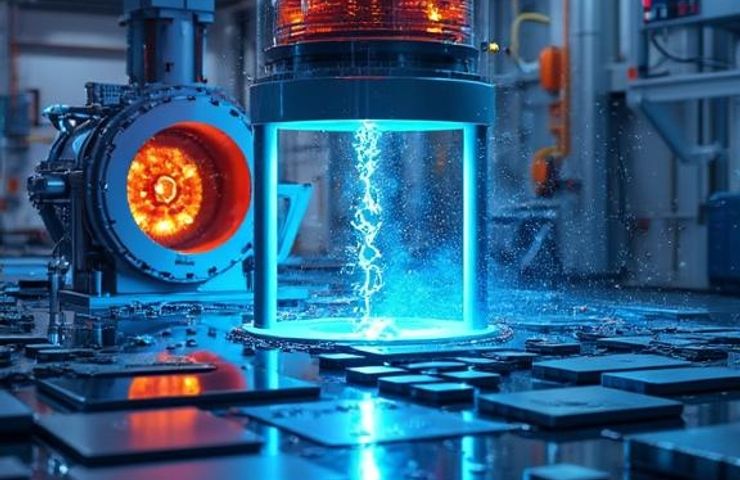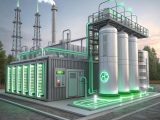
AI-Driven Catalyst Breakthrough Accelerates Hydrogen Production
October 8, 2025Ever notice how most hydrogen projects still hinge on platinum-group metals? Stop chasing rare metals—that’s what the latest from Worcester Polytechnic Institute is basically shouting. Out in Massachusetts, where clean tech is practically a local pastime, Associate Professor Fanglin Che and his crew in the Modeling and AI in Catalysis (MAC) Lab teamed up with powerhouses at Dalian University of Technology and Northeastern University. Their goal? Slash costs and carbon footprints in hydrogen production. And trust me, these are folks you want on your side when you’re talking green hydrogen.
But this is Massachusetts—home to some of the biggest names in chemical engineering—and WPI’s been quietly killing it with applied AI for energy research. Their ace in the hole? Interpretable machine learning paired with plasma-assisted ammonia decomposition. The result? A paper in Nature Chemical Engineering (July 10, 2025), backed by the U.S. Department of Energy. If you’re into sustainable energy or plotting your next pivot to industrial decarbonization, you’ll want to read on.
What It Means
Energy execs and policy junkies, gather ’round: AI just fast-forwarded catalyst discovery by months, maybe years. The WPI squad used smart algorithms to zero in on earth-abundant metal alloys that blow ruthenium out of the water. That means cheaper, cleaner hydrogen—no more sweating about supply chain headaches or sticker shock from imported precious metals. This is a game-changer for scaling up green hydrogen on your own terms.
From Classroom to Catalyst Factory
Remember when catalyst R&D was basically trial, error, and a whole lot of guesswork? Back in 2015, labs were juggling expensive rigs and a handful of metal combos. Fast-forward to now: Che’s lab loaded thousands of bimetallic pairings—think nickel-iron, cobalt-molybdenum—into custom, transparent machine learning models. These models use electronic structure descriptors, adsorption energies, and other nerdy features you don’t need to memorize. The beauty is in the explainability: researchers can literally trace a winning candidate back to the physics that make it tick. Within two days, they junked 95% of the options, honing in on a dozen alloys that tick every box: cost, activity, stability and abundance. Then Dalian’s team put those metal blends through their paces in plasma reactors, proving they crank out hydrogen large and stay tough under continuous use.
Reinventing Ammonia Splitting
Most hydrogen starts life in a steam methane reformer—a process that’s hot, noisy and carbon-heavy. Che’s team flipped the script with plasma-assisted ammonia decomposition. Here’s the gist: feed ammonia (NH₃) into a reactor, zap it with a low-temp plasma field powered by a ~1 kW radio-frequency source, and let the catalyst break NH₃ into N₂ and H₂. They settled on a cozy 350–450 °C for the catalyst bed—a sweet spot balancing performance and longevity. The plasma chops energy needs by up to 20% versus heat-only setups, and the fancy new catalysts mean you can forget platinum or ruthenium. Northeastern’s lifecycle numbers show CO₂ cuts north of 70% if your feedstock ammonia is made via renewable electrolysis. That’s a big win for industrial decarbonization.
Strategic Industry Moves
So why’s the DOE throwing money at this? National energy security. They want a patchwork of small, reliable sustainable energy sites instead of a few giant plants. Their Hydrogen Shot initiative is gunning for $1 per kilogram of clean hydrogen by 2030, and breakthroughs like this are exactly the fuel that could get them there. Picture this: a cargo ship with its own onboard plasma reactor, stocking up on cheap bunker-price ammonia, then cracking it into hydrogen for fuel cells—bye-bye port-based terminals. Or imagine a remote mine site making its own fuel on the fly, far from the nearest pipeline. Che’s work hints at a future where hydrogen production morphs from a centralized fossil-fuel stronghold to a nimble, distributed utility.
Crunching the Numbers
Northeastern’s economists crunched the data: swapping pricey ruthenium for nickel-iron alloys drops catalyst costs from about $150 per gram to under $5. Add in a 20% cut in energy use, and you’re looking at 15–20% lower operating costs. Their sensitivity analysis says even a 10% swing in energy prices can nudge IRRs by 5–8 points—proof that a small efficiency bump here makes or breaks the business case. Emissions? Load up on clean ammonia and you’re under 10 g CO₂e/MJ H₂, compared to over 50 g via old-school methods. Those are the headline metrics for any serious industrial decarbonization pitch.
Proceed with Caution
Hold up before you pop the champagne. There are still hurdles. You need truly green ammonia—if it’s made from gas or coal, you’re just shifting emissions around. Scaling up those plasma reactors? We’re talking pilot rigs, not industrial beasts. Then there’s the headache of high-voltage gear and ammonia safety regs—they can tie you up in red tape for years. Ammonia leaks are no joke, so you’ll need rock-solid monitoring and safety systems. And remember, AI models have their limits: a star performer in the lab might flop at 100 bar or with impure feeds.
Final Take
You’ve got the data and seen the risks. Che’s AI-driven catalyst hunt isn’t a PR stunt—it’s a strategic lever in the race for industrial decarbonization. Next steps? Demo projects with maritime partners or off-grid mining outfits to see if the lab hype holds up at sea or in the desert. Will plasma-powered, AI-optimized systems finally dethrone steam methane reforming? If you’re betting on hydrogen to drive the zero-emission transition, this study just shifted the odds—and raised the stakes—big time.



 With over 15 years of reporting hydrogen news, we are your premier source for the latest updates and insights in hydrogen and renewable energy.
With over 15 years of reporting hydrogen news, we are your premier source for the latest updates and insights in hydrogen and renewable energy.